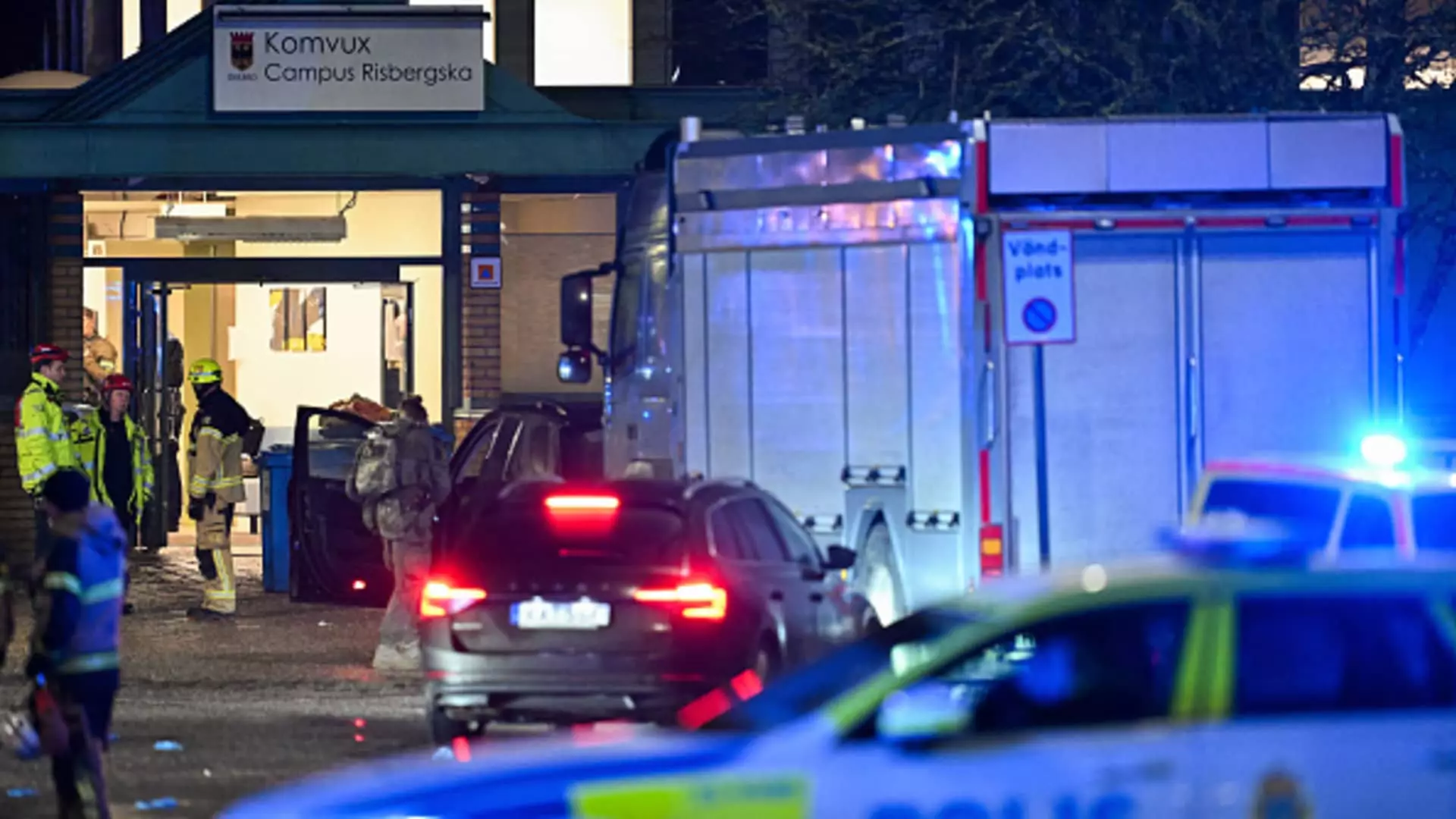The peaceful community of Orebro, Sweden, was shattered by a devastating shooting on a Tuesday afternoon at an adult education center, where ten lives were lost. This tragic event marked one of the worst acts of violence in the country’s recent history, stirring a mixture of shock and sorrow as citizens grappled with the chaotic aftermath. Prime Minister Ulf Kristersson described the day as “painful,” a sentiment echoed by many across the nation. The gunman, believed to be among the deceased, complicated the investigation as the police raced against time to uncover the motive behind this senseless act.
In the wake of the shooting, local police chief Roberto Eid Forest addressed the public, emphasizing the magnitude of the crime scene. “We have a big crime scene,” he stated, reinforcing the urgency and complexity involved in the ongoing investigation. It was highlighted that the perpetrator appeared to have acted alone, with no immediate links to terrorist motivations – a piece of information that offered minimal comfort to a community now grappling with fear and grief. Although the gunman’s identity and history with law enforcement were initially unknown, their role as the sole perpetrator raised numerous questions surrounding background checks and gun access.
The gravity of the situation prompted an investigation encompassing multiple facets, including murder, arson, and weapons offenses. Each step in the investigation is crucial for piecing together the events leading to this horrific act. Witness testimonies, forensic evidence, and a psychological profile of the shooter will be key components in the authorities’ quest for understanding.
The Risbergska school, where the shooting occurred, serves a unique population of adults who have either not completed traditional schooling or are working to further their education and job prospects, often as newcomers to Sweden. The institution is a vital resource, helping many immigrants learn Swedish and navigate their new lives. That this sanctuary of learning turned into a site of tragedy struck a nerve in a community that prides itself on inclusion and education.
Maria Pegado, a teacher at the affected school, described the harrowing moments when the chaos unfolded. Her quick thinking in leading her students to safety speaks volumes about the instinct for protection that educators often feel. However, her account also underscores the surreal nature of such violence in an environment that should inherently be safe. As bytes of information pour in and stories unfold, the individuals’ experiences will shape the narrative of grief and resilience in the months ahead.
The shooting triggered a wave of expressions of sympathy and solidarity. From Swedish royalty to high-ranking European Union officials, the tragedy elicited widespread condolences. King Carl XVI Gustaf’s heartfelt message of sorrow reflected the emotional resonance of the day, while European Commission President Ursula von der Leyen reached out to assure the people of Sweden that they were not alone in their grief. This incident opened dialogue on how to combat increasing violence and the need for communal healing after such incidents.
While gun violence is not prevalent in Sweden compared to other nations, especially the United States, a disturbing trend has emerged in recent years. Gang-related shootings and bombings have become more common, leading to fears about public safety and the reach of illegal firearms. The Orebro tragedy has amplified calls for tighter regulations and more comprehensive strategies to address the roots of violence, particularly in communities affected by gang activity.
Sweden’s gun ownership statistics reveal a nation with cultural ties to hunting and sport shooting, but also one grappling with the realities of illegal weapons dominating the street scenes. The influx of arms in the hands of criminals has heightened concerns among law enforcement and civilians alike.
In the face of increasing violence, the need for preventive measures and community support cannot be overstated. Local leaders, educators, and citizens must come together to mourn, heal, and find ways to fortify their community against such tragedies. It is crucial not only to remember the lives lost in Orebro but also to advocate for systemic change that ensures safety in schools and homes across Sweden. As the nation mourns, the conversation about the future—how to safeguard communities and provide support to those affected—must begin.
The Orebro school shooting is a somber reminder of the fragility of peace in society. It compels us all to reflect deeply on our collective responsibility to create a world where education remains a safe haven and where violent expressions find no foothold.


Leave a Reply